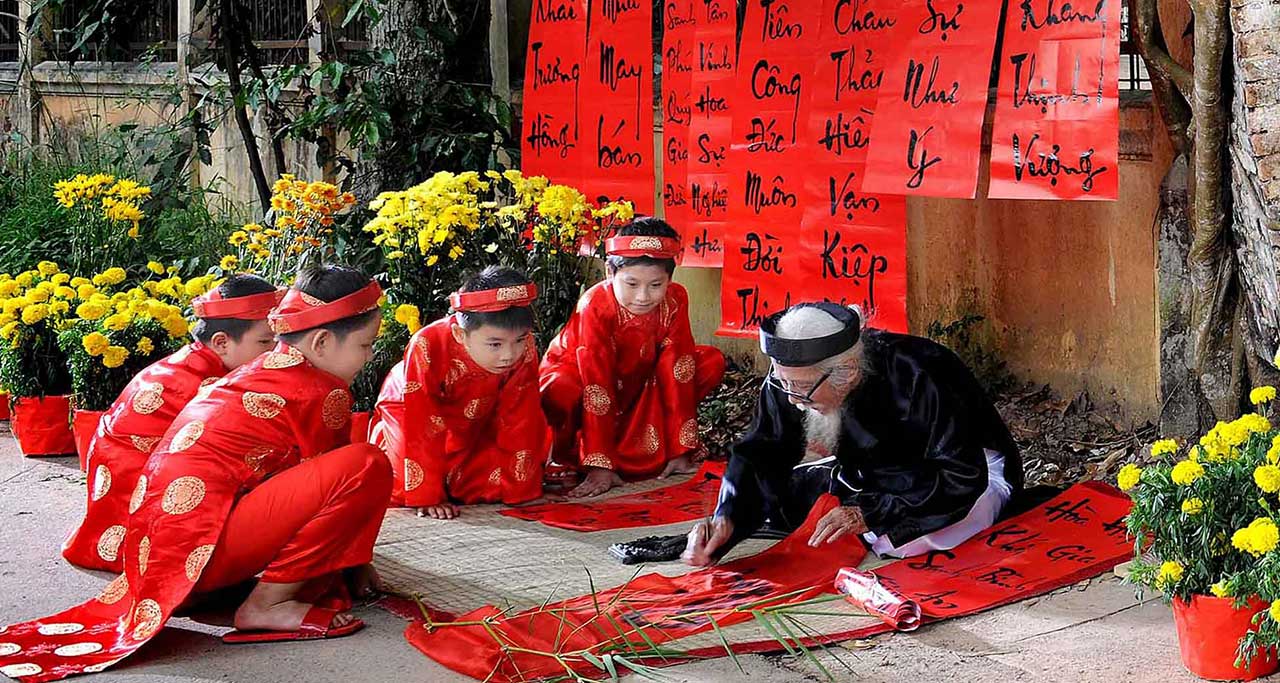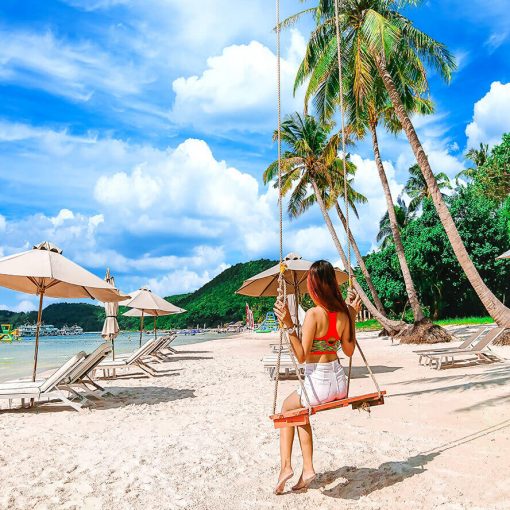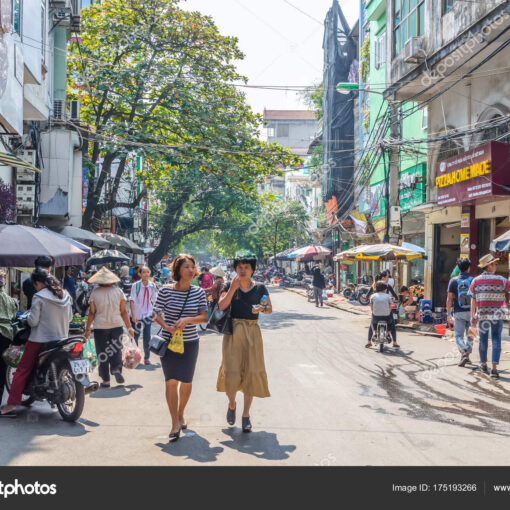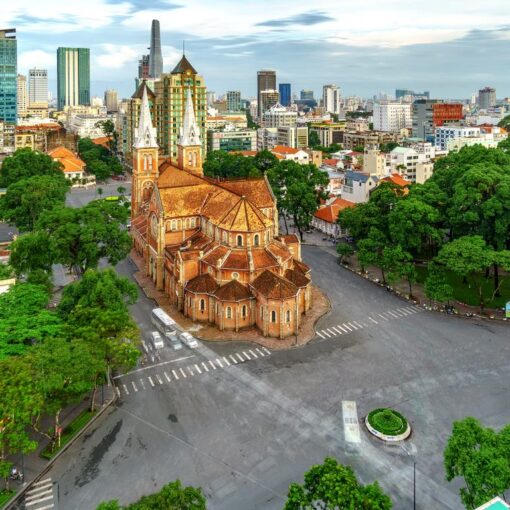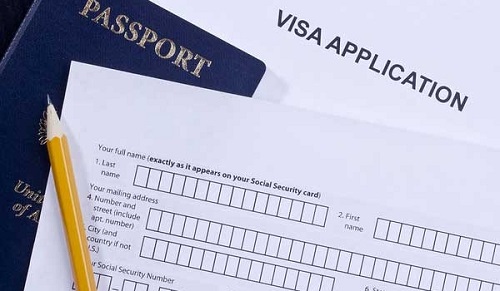Vietnam in January is a great time to visit the country, as it falls within the dry season which runs from November to April. The temperatures are cooler and more comfortable than that of the hot summer months, making it an ideal time to explore the country’s many attractions.
Weather in Vietnam in January
January is part of the dry season in most of Vietnam. The weather is generally mild and pleasant, with average temperatures ranging from 60°F to 70°F (15°C to 21°C) in Hanoi and 65°F to 80°F (18°C to 27°C) in Ho Chi Minh City. The cooler mountainous regions in the north can dip into the 40s and 50s (below 10°C). January skies are often clear and sunny, especially in central and southern Vietnam. The northern part of the country may still see some light rain showers. Humidity levels are comfortable and the ocean breezes help moderate the heat. Pack light layers and clothes that breathe easily. The dry conditions make January ideal for spending time outdoors sightseeing, hiking, biking or relaxing on the beach.
Top Tourist Destinations to visit in January
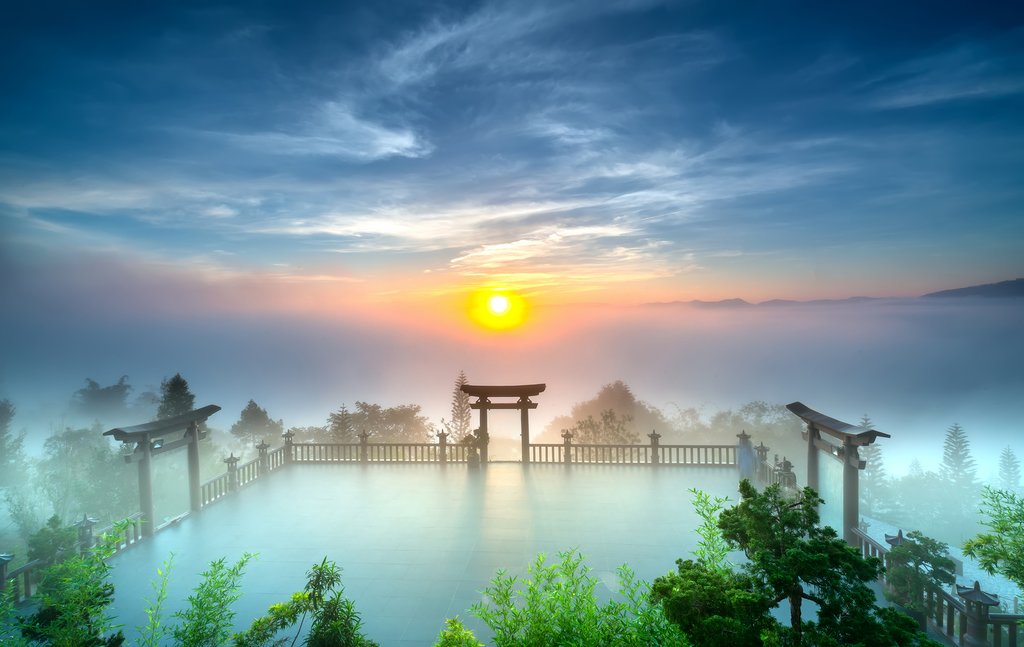
Hanoi
Vietnam’s charming capital comes alive in January. The pleasant weather makes exploring the Old Quarter, Hoan Kiem Lake and French Quarter on foot enjoyable. Don’t miss the cultural performances at the Thang Long Water Puppet Theatre. January is also less crowded at popular sites like the Ho Chi Minh Mausoleum.
Halong Bay
Cruising the emerald waters and limestone islets of Halong Bay is magical any time of year. January’s cool breezes and minimal rain create ideal conditions to explore above and below deck. Kayaking into secluded lagoons or swimming from remote beaches is perfection.
Hoi An
The atmospheric Ancient Town of Hoi An dazzles visitors with its lantern-lit lanes, historic architecture and vibrant riverfront. January brings comfortable temperatures for strolling around town and crossing the iconic Japanese Bridge. It’s also an excellent time to bike ride through the surrounding countryside dotted with farms, villages and beaches.
Ho Chi Minh City
Vietnam’s largest metropolis offers an intoxicating blend of old and new. The dry season means pleasant weather for wandering colonial landmarks, absorbing history at the War Remnants Museum and getting lost in the crowds and neon lights of District 1’s night markets.
Festivals and Events happening in January
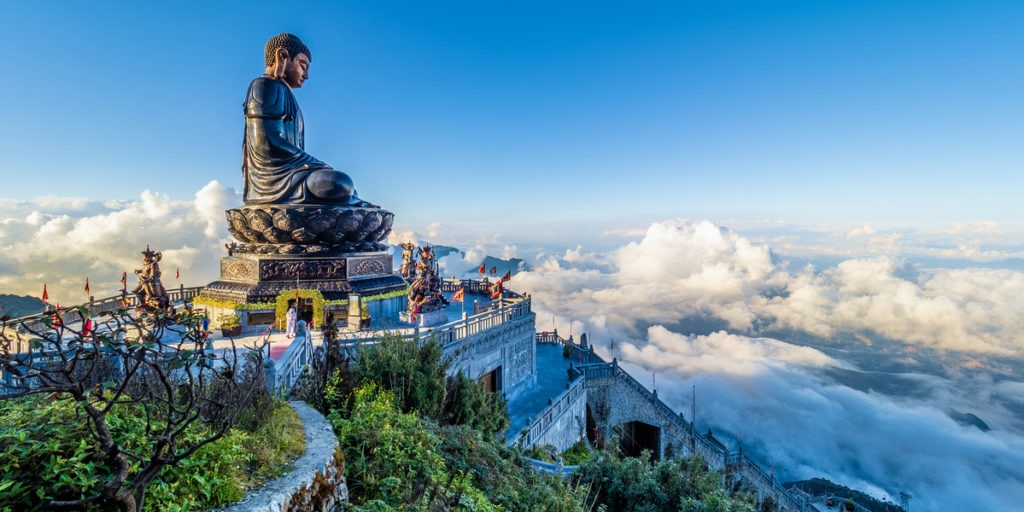
Nguyen Tieu Festival
Celebrated on the 15th day of the first lunar month, this huge lantern festival marks an important day of the Tet holiday period. Thousands gather in cities across central Vietnam carrying elaborate lanterns in processions and staging cultural performances.
Dalat Flower Festival
Held for over 20 years, this annual festival transforms Dalat into a riot of color and scents. Flower lovers flock here to admire countless blooms and take part in gardening seminars, flower displays, arts and music. It’s scheduled January 10-15, 2023.
Buffalo Fighting Festival
Catch Vietnam’s longest-running traditional sport in action in the Mekong Delta. Held the 6th day of the first lunar month, buffalo are ornately decorated and matched in strengths for friendly tussles. The lively crowds and festive atmosphere create an unforgettable experience.
What to pack for a trip to Vietnam in January
- Light layers like cardigans and sweatshirts for cool mornings and evenings
- Light pants, skirts and shorts
- Waterproof jacket for potential rain showers
- Comfortable walking shoes
- Sandals for the beach
- Hat, sunglasses and sunscreen
- Lightweight scarves or wraps that offer sun protection
- Mosquito repellent
- Small backpack or crossbody bag for carrying essentials
- Universal adapter and portable charger
Focus on breathable, lightweight fabrics that will keep you comfortable in the tropical climate. Dress is casual throughout Vietnam, but cover shoulders and knees when visiting temples.
Best Time to book flights and accommodations for January travel
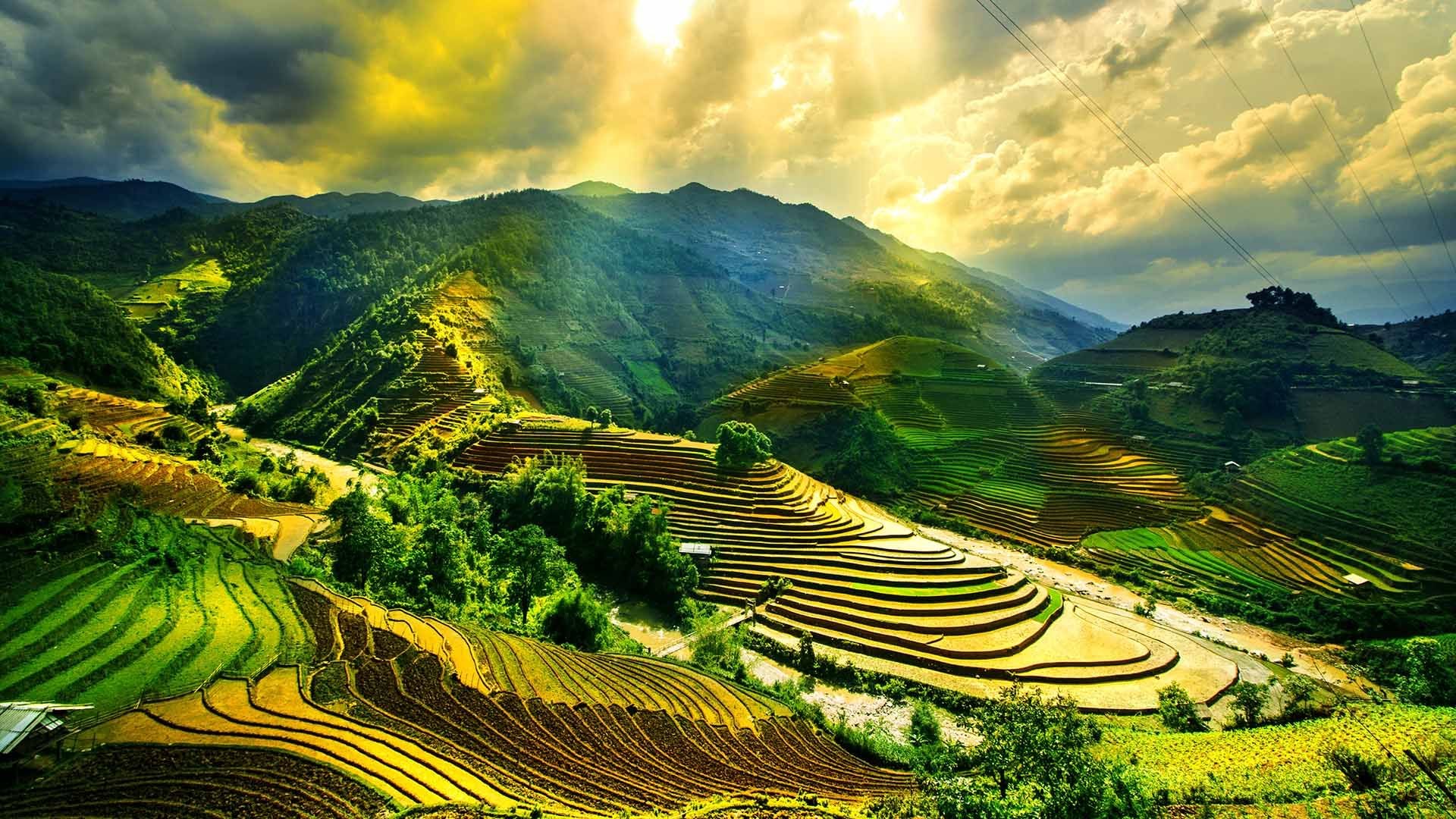
Aim to book at least 2-3 months in advance for the best deals on flights and hotels. Prices jump for the Tet holiday period around late January to early February. Try to arrive before or after these dates. Opt for centrally located hotels with air conditioning, as urban areas can still feel quite warm. Or consider staying in beach towns like Nha Trang or Mui Ne for refreshing ocean breezes. Plan any Sapa or Halong Bay visits for early January, when the weather is often clearest before the spring rains arrive.
Local Cuisine to try during your January visit
Vietnamese food dazzles visitors with its complex flavors and variety. Warm yourself up in Hanoi’s chilly winter with a steaming bowl of pho noodle soup or bun cha grilled pork with rice vermicelli. Head south for fresh tropical fruits like mangoes, dragon fruit, jackfruit and rambutan. Crunchy green papaya salads pair perfectly with grilled meats or seafood. Savor Ho Chi Minh City’s fantastic street food scene by sampling bánh mì sandwiches, noodle bowls and Vietnamese coffee. Be sure to try Cha Gio, crispy spring rolls with pork and shrimp. The light citrus flavor complements January’s cooler weather.
Outdoor Activities to enjoy in Vietnam in January
With its balmy January climate, Vietnam invites outdoor adventures. Some top activities include:
Hiking
Trek through terraced rice fields in Sapa, or hike forested mountains like Yen Stream in Mai Chau. Halong Bay’s towering karst peaks and Cat Ba Island offer excellent trails with panoramic views.
Beaches
Head to the tropical beaches dotting central and southern Vietnam. Popular spots like Nha Trang, Danang and Mui Ne have plenty of January sunshine for swimming, snorkeling or just relaxing on the sand.
Biking
Biking through small towns and rural backroads lets you experience traditional Vietnamese life. The Mekong Delta, Mai Chau valley and Red River Delta offer flat routes past emerald rice paddies. Hoi An and Dalat have scenic mountain bike trails.
Kayaking
Paddle through Halong Bay’s secluded lagoons, around coastal mangroves or down rivers like the Mekong. Kayaking provides an up-close perspective on natural Vietnam.
Stand Up Paddleboarding
Calm bay waters make January great for SUP in spots like Nha Trang. Glide across the water and enjoy the views of nearby islands and villages.
Cultural Etiquette Tips for travelers in January
The Vietnamese are generally very welcoming, but observing some basic etiquette will help you avoid faux pas.
- Dress modestly when visiting temples and rural areas. Cover shoulders and knees.
- Remove shoes when entering homes, restaurants or temples.
- Ask before taking photos of people, especially minority tribal groups.
- Use both hands when exchanging business cards or gifts.
- Avoid public argument or criticism of politics.
- Don’t touch anyone on the head, as it’s considered rude.
- Eat with a spoon or chopsticks – forks are provided but not commonly used.
- Slurping noodles loudly or burping shows you enjoyed the meal.
Learning a few simple phrases like “hello” (xin chào) or “thank you” (cảm ơn) in Vietnamese will be greatly appreciated. The Vietnamese often avoid saying “no” directly, so pay attention to subtle cues in conversation. With some cultural awareness, you’re sure to have positive interactions during your January travels.
Transportation Options for getting around Vietnam in January
Vietnam offers convenient transportation between major destinations. Here are some options:
- Flights – Fast and affordable flights connect Hanoi, Danang, Ho Chi Minh City and other large cities. Carriers like VietJet, Bamboo Airways and Vietnam Airlines have competitive rates.
- Overnight Trains – Book a sleeping berth on trains linking Hanoi, Hue and Ho Chi Minh City. It lets you rest while traveling between cities. Private cabins available.
- Buses – Reliable, budget buses like Sleeper and Limousine are nicely appointed and make stops along the coast. Good for short hops between towns.
- Taxis – Best way to get around within cities. Ask your hotel to call a reputable company or book through an app like Grab. Bargain on pricing before you set off.
- Rental Cars – Convenient for touring the countryside at your own pace. International companies available, but beware chaotic traffic. Get an International Driving Permit.
- Cycling – Pedal through Vietnam’s scenic landscapes. Many tour companies offer guided cycling packages.
Tips to apply visa to Vietnam in January
Here are some tips to apply for a visa to Vietnam in January:
1. Choose the right visa type. There are different types of visas available for Vietnam, depending on your purpose of travel and nationality. For most tourists, a single-entry or multiple-entry eVisa is the most convenient option. You can apply for an eVisa online and receive your approval letter within a few days.
2. Apply in advance. Even though eVisas are processed quickly, it is always a good idea to apply at least two weeks in advance of your trip, especially if you are traveling during peak season (December to January). This will give you enough time to receive your approval letter and make any necessary arrangements, such as booking your flights and accommodation.
3. Gather the required documents. The required documents for a Vietnam eVisa application are:
- A valid passport with at least 6 months of validity remaining and at least 2 blank pages.
- A recent passport-sized photo.
- A credit or debit card to pay the visa fee.
4. Fill out the application form carefully. The Vietnam eVisa application form is straightforward, but it is important to fill it out carefully and accurately. Be sure to double-check all of your information before submitting your application.
5. Review your approval letter. Once you have received your eVisa approval letter, be sure to review it carefully to make sure that all of the information is correct. If you notice any errors, contact the Vietnamese embassy or consulate immediately.
6. Print out your approval letter. You will need to print out your eVisa approval letter and bring it with you when you travel to Vietnam. You will need to present your approval letter to the immigration officer at the port of entry in order to receive your visa stamp.
Additional tips for applying for a visa to Vietnam in January:
- Keep in mind that the Vietnamese New Year holiday (Tết) typically falls in January or February. Tết is a major holiday in Vietnam, and many businesses and government offices are closed during this time. If you are planning to travel to Vietnam during Tết, it is important to apply for your visa well in advance.
- If you are traveling to Vietnam with a group, you can apply for a group eVisa. This can save you time and money, as you only need to submit one application for the entire group.
- If you have any questions or concerns about applying for a visa to Vietnam, you can contact the Vietnamese embassy or consulate in your home country.
Safety Precautions for Travelers visiting Vietnam in January
January’s comfortable weather draws crowds, so prepare accordingly.
- Research your destination beforehand and allow extra time for sightseeing.
- Watch your belongings in crowded markets and tourist sites. Keep valuables in hotel safe.
- Only take licensed taxis or ride shares through an app.
- Drive slowly and defensively. Roads can be hazardous with bikes, scooters, pedestrians.
- Cross streets carefully as traffic does not always stop for pedestrians.
- Drink only bottled water and be cautious with raw fruits/veggies.
- Always wear a helmet when biking, and reflective clothing at night.
- Consider travel insurance in case of any medical emergencies.
By using common sense precautions, you can focus on creating amazing memories during your January Vietnam getaway.

